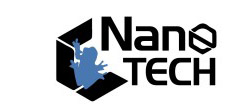TRANSNANO: Fabricación y estudio de las propiedades de transporte de nanodispositivos basados en grafeno y materiales híbridos avanzados
Para realizar avances en las aplicaciones de materiales novedosos como el grafeno es necesario contar con grupos multidisciplinares que combinan los esfuerzos teóricos con los experimentales. Pretendemos diseñar, fabricar y caracterizar, primero mediante modelos analíticos y numéricos y posteriormente en el laboratorio, diversos nanodispositivos para la electrónica basados en grafeno y materiales híbridos avanzados (como nitruro de boro hexagonal o aislantes topológicos creados en heterouniones de semiconductores III-V y en láminas de Pb-Sn-Te/Se). Los nanodispositivos comprenden transistores de efecto campo, anillos cuánticos, superredes, arreglos de nanopartículas e hilos cuánticos. Estos dispositivos son de interés tecnológico porque podrían propiciar la aparición de resistencia diferencial negativa, la polarización de espín de la corriente eléctrica, el calentamiento local y controlable a escala nanométrica o propiedades termoeléctricas superiores a las que presentan los materiales masivos convencionales. La sinergia entre el Grupo de Nanotecnología de la Universidad de Salamanca (con investigadores experimentales con experiencia en fabricación y caracterización de nanodispositivos electrónicos) y de la Universidad Complutense de Madrid (con investigadores del Grupo de Nanosistemas Cuánticos pertenecientes a las áreas de Física Aplicada y de Ciencia de Materiales e Ingeniería Metalúrgica expertos en modelización) está demostrando ser muy fructífera y, sin duda, permitirá alcanzar los nuevos retos e hitos que proponemos. Los resultados que obtengamos serán de interés no sólo para la Ciencia básica sino que también tienen proyección industrial, como lo muestra el interés de tres empresas españolas pioneras en este campo que apoyan nuestra propuesta.
TRANSNANO: Fabrication and study of the transport properties of nanodevices based on graphene and advanced hybrid materials
Advances in the applications of new materials such as graphene often rely on multidisciplinary groups that combine theoretical analysis and experiment. We aim to design, fabricate and characterise, first by means of analytical and numerical models and later in the laboratory, a large variety of nanodevices for the electronics based on graphene and hybrid advanced materials (as hexagonal boron nitride or topological insulators created at heterojunctions of III-V semiconductors and in Pb-Sn-Te/Se films). These nanodevices comprise field effect transistors, quantum rings, superlattices, arrays of nanoparticles and quantum wires. The expected outcome is of interest in technology because they might give rise to devices with differential negative resistance, spin-polarised electric current, local and controllable heating at the nanometer scale or enhanced thermoelectric performance compared to bulk conventional materials. The synergy between the Nanotechnology Group of the University of Salamanca (with experienced researchers in manufacture and characterisation of electronic nanodevices) and of the Complutense University of Madrid (with researchers of the Quantum Nanosystems Group belonging to the areas of Applied Physics and Materials Science that are expert in modeling) it is proving to be very fruitful and, undoubtedly, it will allow us to reach the new challenges and milestones we are proposing. The results will be of interest not only for basic Science but also they have industrial projection, as indicated by the three Spanish pioneering companies in the field of nanofabrication supporting our proposal.

